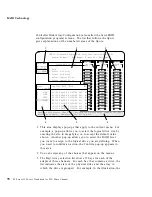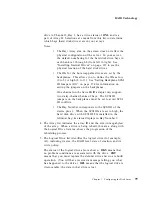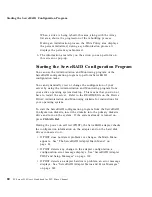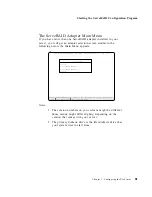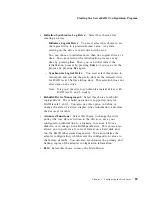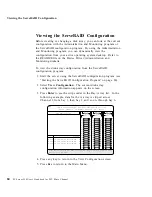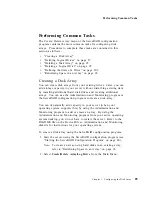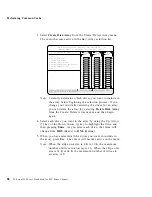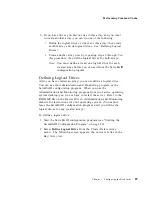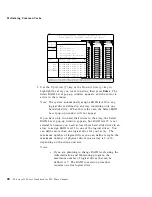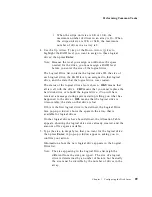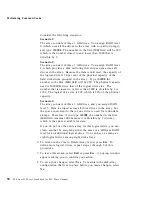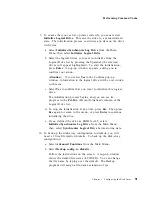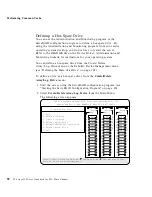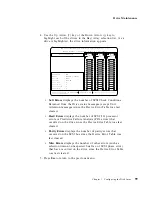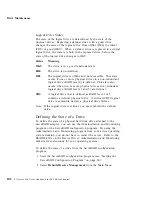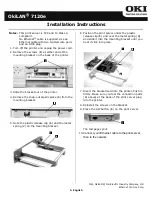
Performing Common Tasks
6. If you have drives you did not use in this array and you want
to create another array, you can do one of the following:
Define the logical drive or drives for this array; then create
another array and its logical drives. See “Defining Logical
Drives.”
Create another array now by repeating steps 2 through 5 in
this procedure; then define logical drives for both arrays.
Note: You must define at least one logical drive for each
created array before you can exit from the ServeRAID
configuration program.
Defining Logical Drives
After you have created an array, you must define a logical drive.
You can use the Administration and Monitoring program or the
ServeRAID configuration program. When you use the
Administration and Monitoring program from your active operating
system desktop, you do not have to restart the server. Refer to the
README file on the Device Driver/Administration and Monitoring
diskette for instructions for your operating system. (You cannot
leave the ServeRAID configuration program until you define the
logical drives for any created arrays.)
To define a logical drive:
1. Start the ServeRAID configuration program (see “Starting the
ServeRAID Configuration Program” on page 80).
2. Select Define Logical Drive from the Create/Delete Array
menu. The following screen appears; the cursor is active in the
Bay/Array list.
Chapter 3. Configuring the Disk Array
87
Summary of Contents for PC Server 520
Page 1: ...PC Server 520 User s Handbook for PCI Micro Channel IBM...
Page 86: ...Installation Checklist 70 PC Server 520 User s Handbook for PCI Micro Channel...
Page 146: ...Using the Mini Configuration Program 130 PC Server 520 User s Handbook for PCI Micro Channel...
Page 190: ...Using the SCSISelect Utility Program 174 PC Server 520 User s Handbook for PCI Micro Channel...
Page 385: ...Installing Additional Test Programs 207 CMD 3 Chapter 7 Solving Problems 369...
Page 438: ...IBM Part Number 78H6336 Printed in U S A May 1996 78H6336...






